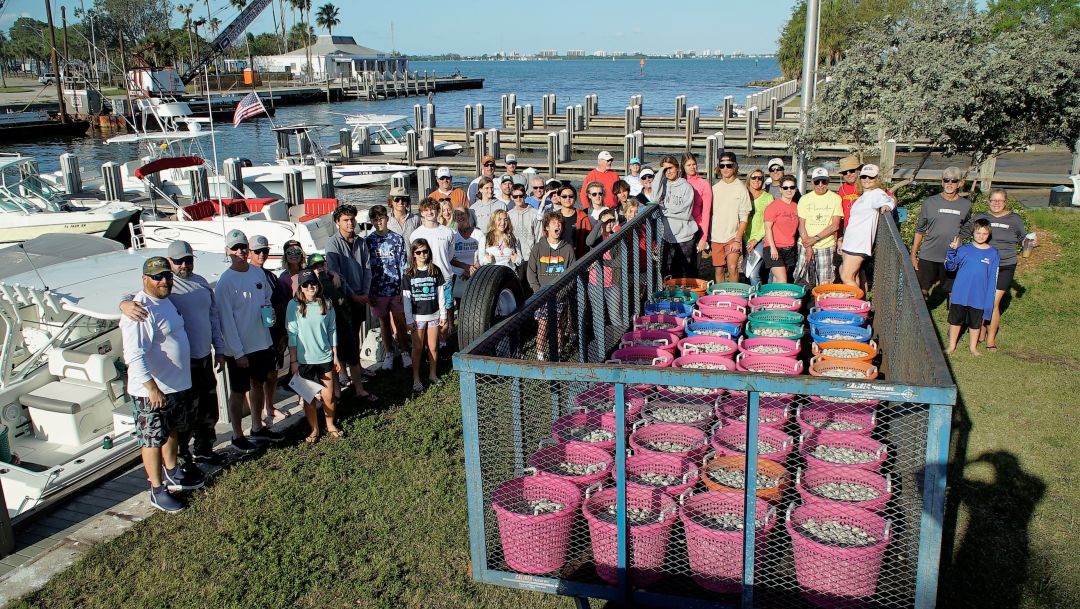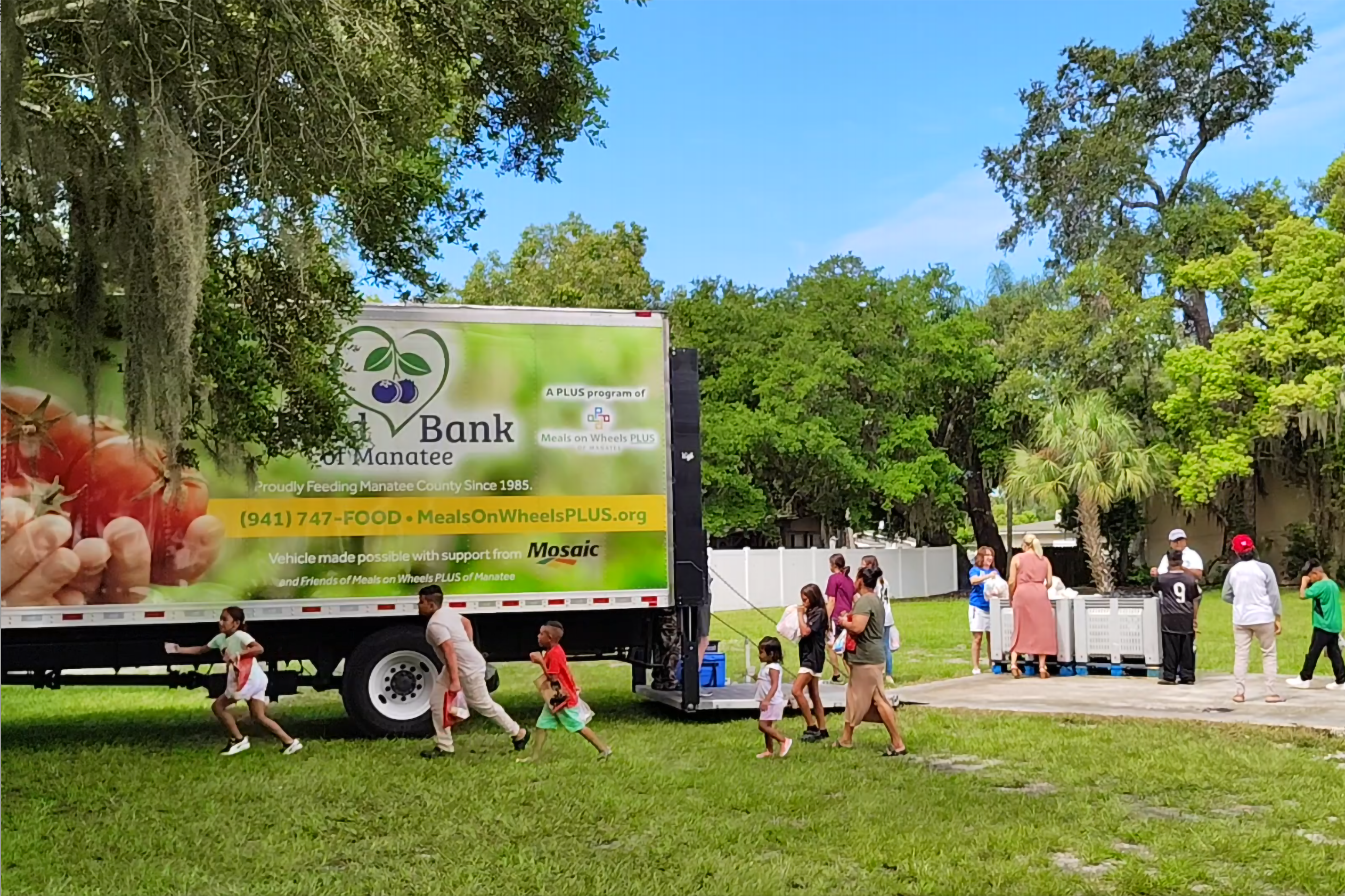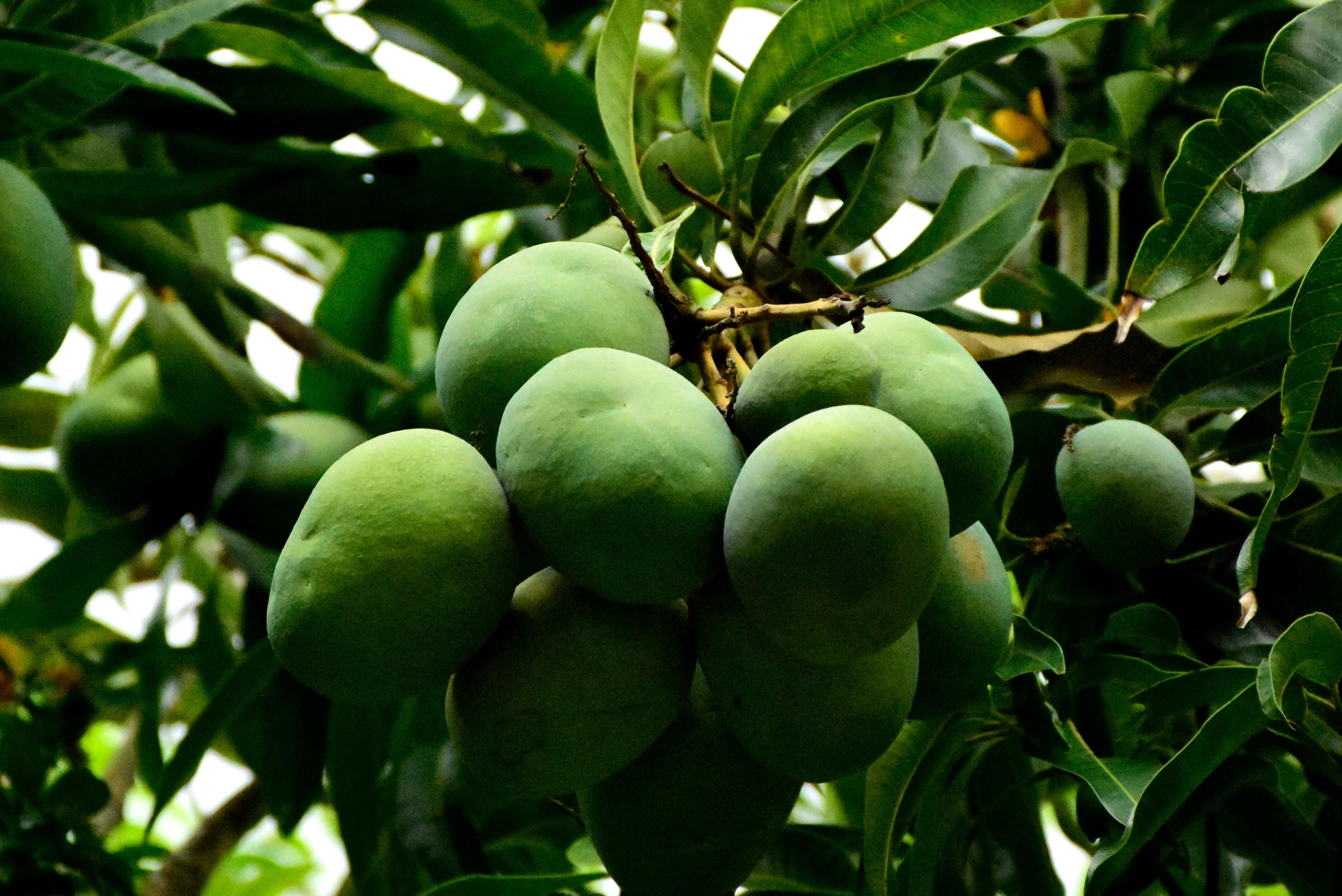Sarasota Bay Watch Granted State's First Underwater Aquaculture Lease Rights

Sarasota Bay Watch volunteers at clam release in March 2022
Image: Courtesy Sarasota Bay Watch
Love science? This news might captivate your inner Bill Nye. Sarasota Bay Watch recently announced that it received the state's first underwater aquaculture lease for clam restoration and research.
Restoration and research? That's right: while a good clam chowder while reading Moby Dick may sound delightful, these clams serve a different purpose. The new lease agreement—the first of its kind in the state—provides Sarasota Bay Watch the rights to rear and distribute native hard-shell clams to continue improving regional water quality through bivalve restoration. The million clams slated to be released into Sarasota Bay this year will utilize their natural filtering properties to keep the water clean. Sarasota Bay Watch will grow and harvest them within the lease area for activities directly related to restoration.
"This lease enables us to increase our restoration scope and provides a large-scale project for research to advance the understanding of water quality issues and impactful approaches to restoration," explains Ronda Ryan, Sarasota Bay Watch's executive director.
The 4.5-acre plot will be leased for 5 years and will host scientific research, and the shellfish located within the leased area are protected by law from harvesting from outside parties.
Sarasota Bay Watch's clam project began in 2018; to date, the organization has released a total of 1,525,000 clams with the help of the community and volunteers. The group plans to deploy a million more clams this year. It takes approximately 18 months for a clam to be ready for placement within a pre-assessed restoration site; meanwhile, the clams will filter water, spawn and reproduce within the leased area.
For more information on how to support Sarasota Bay Watch on their mission to restoring the local coastal ecosystem, please visit the Sarasota Bay Watch's website.



